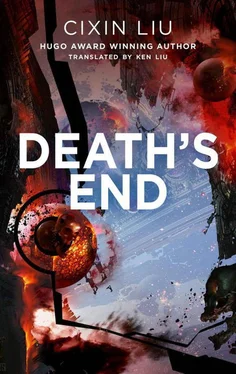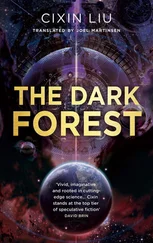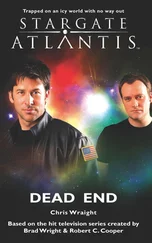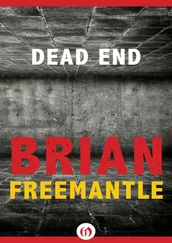In the history of the early Crisis Era, UN Secretary General Say was a key figure. She believed that the time for a new UN had arrived and advocated transforming the institution from what was little more than a meeting place for the great powers and an international forum, into an independent political body with the power to genuinely direct the construction of the Solar System’s defenses.
To achieve this goal, the UN needed sufficient resources, a requirement that appeared impossible to meet given the realities of international relations. The Stars Our Destination Project was an attempt by Say to acquire such resources for the UN. No matter the results, the very attempt was a testament to her political intelligence and imagination.
The basis for the project lay in the Space Convention, which was a product of pre-Crisis politics. Based on the principles enacted in the Law of the Sea Convention and the Antarctic Treaty, the Space Convention was negotiated and drafted over a long period of time. But the pre-Crisis Space Convention was limited to resources within the Kuiper Belt; the Trisolar Crisis forced the nations of the world to set their sights farther out.
Since humans had not even been able to set foot on Mars, any discussion of outer space was meaningless, at least prior to the expiration date of the Space Convention fifty years after it was drafted. But the great powers viewed the Convention as the perfect venue for political theater and amended it with provisions regarding resources outside the Solar System. The amendment provided that the development of natural resources outside the Kuiper Belt, and other economic activities regarding them, had to take place under the auspices of the United Nations. The amendment went into excruciating detail to define “natural resources,” but, basically, the phrase referred to resources not already occupied by nonhuman civilizations. This treaty also offered the first international law definition for “civilization.” Historically, this document was referred to as the Crisis Amendment.
The second motivation for the Stars Our Destination Project was Escapism. At the time, the Escapist movement was still in its early stages, and its consequences were not yet apparent, such that many still considered it a valid choice for humanity in crisis. Under such conditions, other stars, especially stars with their own planets, became valuable.
The initial resolution proposing the Stars Our Destination Project would have the UN auction off the rights to certain stars and their planets. The intended bidders were states, businesses, NGOs, and individuals, and the proceeds from the auction would be used to fund the UN’s basic research into a Solar System defense system. Secretary General Say explained that the universe had an abundance of stars. There were more than three hundred thousand stars within one hundred light-years of the Solar System, and more than ten million within one thousand light-years. A conservative estimate suggested that at least one-tenth of these stars had planets. Auctioning off a small proportion of these would not affect the future of space development much.
This unusual UN resolution attracted wide interest and attention. The permanent members of the Planetary Defense Council (PDC) mulled it over, but each decided that adopting it would not lead to adverse consequences in the foreseeable future. On the other hand, voting against it would incur a heavy cost under the prevailing international political climate. Still, debates and compromises followed, and the final version of the resolution that passed was limited to stars more than one hundred light-years away.
The project was halted almost as soon as it began for a simple reason: No one bought the stars. In total, only seventeen stars were auctioned off, and all at the minimum reserve price. The UN earned a grand total of only about forty million dollars.
None of the winning bidders ever revealed themselves. People speculated on why they spent so much money to buy a piece of useless paper—even if the paper was supposed to be a binding legal instrument. Maybe it felt cool to own another world, but what was the point when you could see but not touch it? Indeed, some of the stars were not even visible with the naked eye.
Say never thought of the project as a failure. She claimed that the results were just as she predicted. Fundamentally, the Stars Our Destination Project was a political proclamation by the UN.
The Stars Our Destination Project was quickly forgotten. It was a classic example of the irregular behavior of human society at the beginning of the Crisis.
Crisis Era, Year 4 Yun Tianming
The day after making his decision to buy Cheng Xin a star, Yun Tianming called the number listed on the website for the Chinese office of the Stars Our Destination Project.
Then he called Hu Wen to get some basic information about Cheng Xin: contact address, national ID number, and so forth. He was prepared for any number of reactions from Wen in response to his request—sarcasm, pity, exclamation. Instead, after a long silence, all he heard was a soft sigh.
“No problem,” Wen said. “But she’s probably not in China right now.”
“Just don’t tell her I’m the one asking.”
“Don’t worry. I won’t ask her directly.”
The next day, Tianming got a text from Wen with all the information he had asked for, but nothing about Cheng Xin’s employment. Wen explained that no one knew where Cheng Xin had gone after she left the Academy of Spaceflight Technology last year. Tianming saw that there were two mailing addresses for her: one in Shanghai and another in New York.
That afternoon, Tianming asked Dr. Zhang to give him permission to leave the hospital and run an errand. The doctor wanted to come with Tianming, but he insisted on going alone.
Tianming took a taxi and arrived at UNESCO’s Beijing office. After the Crisis, every UN office in Beijing had expanded rapidly, and UNESCO now took up most of an office building outside of the Fourth Ring Road.
A giant star map greeted Tianming as he entered the spacious office of the Stars Our Destination Project. Silver lines connected the stars in constellations against a pitch-black background. Tianming saw that the map was displayed on a high-definition screen, and a computer nearby allowed for zooming and searching. The office was empty except for a receptionist.
Tianming introduced himself, and the receptionist excitedly went away and returned with a blond woman.
“This is the director of UNESCO Beijing,” the receptionist explained. “And also one of the people responsible for implementing the Stars Our Destination Project in the Asia-Pacific region.”
The director appeared very pleased to see Tianming as well. She held Tianming’s hand and told him, in fluent Chinese, that he was the first Chinese individual to express an interest in buying a star. She would have preferred a ceremony to generate as much media coverage as possible, but she refrained out of respect for his wish for privacy. She seemed quite sorry to lose out on a wonderful opportunity to publicize the project.
Don’t worry, Tianming thought. No other Chinese will be as dumb as me.
A middle-aged, well-dressed man wearing glasses came in. The director introduced him as Dr. He, a researcher at the Beijing Observatory. The astronomer would help Tianming with the details of his purchase. After the director left, Dr. He asked Tianming to sit down, and called for tea to be served.
“Are you feeling all right?” he asked Tianming.
Tianming knew that he didn’t exactly look healthy. But after stopping chemo—which had been like undergoing torture—he felt much better, almost as if he’d gotten a new lease on life. Ignoring Dr. He’s question, he repeated the request he had already made on the phone.
Читать дальше












